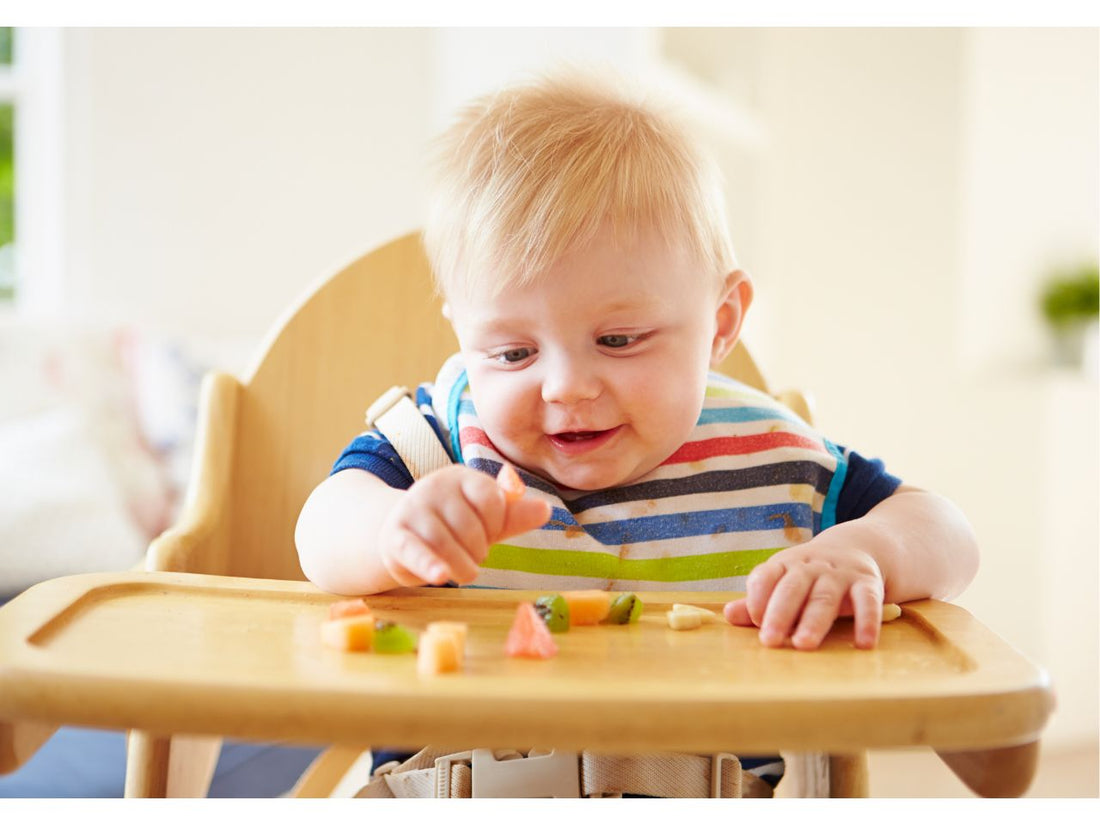Making Mealtime More Than Just Eating
For many parents, mealtime can feel like a battle—convincing a toddler to eat their veggies, avoiding spills, and dealing with picky eating. But what if mealtime could be more than just getting food into tiny bellies?
A sensory mealtime experience engages all five senses—touch, taste, smell, sight, and sound—to help children explore food in a fun and meaningful way. For some toddlers, especially those with sensory sensitivities, this approach can make eating more comfortable and enjoyable. For others, it can make them more open to trying new foods and textures.
Let’s dive into how you can create a sensory-friendly eating environment that transforms mealtime into an exciting and positive experience!

1. Engaging the Senses at Mealtime
Every meal presents an opportunity for kids to explore and learn through their senses. Here’s how to engage each sense during mealtime:
👀 Sight: Play with colors—use bright fruits and veggies to make the plate visually appealing.
👃 Smell: Let kids sniff their food before eating—it helps them process new flavors.
👅 Taste: Offer a mix of flavors—sweet, salty, sour, and mild—to expand their palate.
🖐 Touch: Encourage hands-on exploration—soft avocado, crunchy crackers, or smooth yogurt.
👂 Sound: Make mealtime playful—crunching celery, stirring soup, or tapping a spoon.
💡 Pro Tip: Let your toddler touch and play with their food before eating—it’s a natural way for them to explore textures and feel more comfortable with new foods.
2. Creating a Sensory-Friendly Eating Environment
A comfortable and engaging environment can make all the difference in reducing mealtime stress.
Tips for a Sensory-Friendly Mealtime:
✔ Reduce Distractions – Turn off the TV and put away toys to help your child focus on their meal.
✔ Use Soft Lighting – Bright lights can be overwhelming; natural or dim lighting can be more calming.
✔ Minimize Noise – Loud, chaotic mealtimes can be overwhelming; play soft background music if needed.
✔ Offer Safe Sensory Tools – Use toddler-friendly utensils like the Little Grubbers 3-in-1 Baby Spoon™, designed for easy gripping and self-feeding.
✔ Encourage Self-Feeding – Letting your child feed themselves builds confidence and independence.

3. How to Make Food More Engaging for Toddlers
If your child is hesitant to try new foods, making meals interactive and playful can encourage them to explore.
Fun Ways to Engage Your Toddler at Mealtime:
🍽 Let Them Touch the Food – Before using utensils, let them feel the texture of different foods.
🎨 Play with Colors – Arrange food in fun patterns or use colorful plates to make meals visually appealing.
🍴 Provide Different Textures – Serve a mix of soft, crunchy, smooth, and chewy foods in one meal.
🌟 Make Food Fun – Use cookie cutters to create fun shapes out of sandwiches or fruits.
🥄 Encourage Dipping – Offer a small bowl of hummus, yogurt, or peanut butter for them to dip their food in.
💡 Pro Tip: Some kids love the feeling of squishing mashed potatoes or crunching on crackers—it’s all part of the sensory experience!
4. Helping Picky Eaters Through Sensory Play
If your toddler is struggling with trying new foods, sensory play outside of mealtime can help them get used to different textures and smells.
Try These Sensory Play Activities:
🌾 Food Bin Exploration – Fill a bin with uncooked rice, dried pasta, or beans and let them scoop and play.
🎭 Pretend Cooking – Let them stir, pour, and mix ingredients in a bowl.
🎨 Food Painting – Use yogurt with food coloring and let them “paint” on their plate before eating.
💡 Pro Tip: If your child is hesitant to touch a food, let them play with a similar texture in a non-eating context first (e.g., letting them squish playdough before introducing mashed sweet potatoes).
5. Adapting to Sensory Sensitivities
Some toddlers have strong reactions to certain food textures, smells, or temperatures. If your child has sensory sensitivities, small changes can make a big difference.
How to Help a Sensory-Sensitive Eater:
✅ Serve Familiar Foods Alongside New Ones – Offer a favorite food next to something new.
✅ Adjust the Texture – If they dislike mushy foods, try roasting instead of mashing.
✅ Modify Temperatures – Some kids prefer warm food, while others like it room temperature.
✅ Let Them Smell First – Introducing a new smell before eating can reduce hesitation.
✅ Give Choices – Let them pick between two options: “Do you want carrots or cucumbers?”
💡 Pro Tip: Never force your child to eat a food. Instead, keep offering it in low-pressure situations to build familiarity.
Final Thoughts: Mealtime Can Be a Sensory Adventure!
When you turn mealtime into a sensory experience, you’re not just feeding your child—you’re helping them explore, learn, and build a positive relationship with food.
By engaging the senses, creating a calm mealtime environment, and making food interactive and fun, you can encourage curiosity and reduce picky eating.
💛 Want to make self-feeding easier? The Little Grubbers 3-in-1 Baby Spoon™ is designed for small hands, helping toddlers explore food while learning to eat independently.
🛒 Check it out here.
💬 What’s your child’s favorite sensory food? Share in the comments below! 😊

